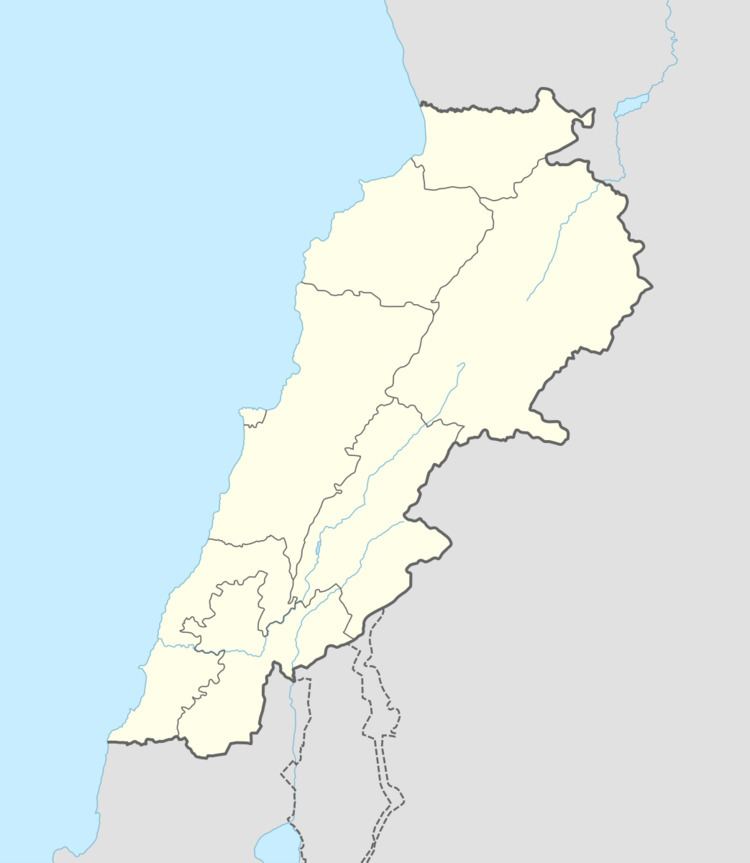District Zahlé Area code(s) (+961) 8 | Time zone GMT +2 Local time Friday 8:52 AM | |
 | ||
Weather 15°C, Wind SE at 8 km/h, 39% Humidity | ||
Karak (also Kerak, Karak Nuh or Karak Noah) (Arabic: Kerak كرك) is a village in Zahlé District, Beqaa Governorate, Lebanon. It is located on the Baalbek road close to Zahle. Karak contains a sarcophagus claimed by the locals to be the tomb of Noah.
Contents
Map of Karak Nouh, Lebanon
History
The town was an important religious site during the Middle Ages, drawing devotion from the local rural village communities. The town was known as al-Karak during the time of the Ayyubid dynasty and changed to Karak Nuh under the Mamluks. It became known as a centre of learning for Shia Islam and the administrative centre of the southern Beqaa. A Mamluk officer establishied the first recorded waqf endowment for Karak in 1331 AD. A Safavid Sheikh and various dignitaries were born in the town. Under the Ottoman Empire, in around 1538 the waqf was increased and 'Alwan family appointed responsible for the site. A major earthquake damaged the town's distinguishing minaret in 1705, which required repair.
Tomb of Noah
According to tradition mentioned by al-Mukaddasi, the tomb of Noah existed in the tenth century and can still be seen. The stone tomb measures around 104.8 feet (31.9 m) long, 8.7 feet (2.7 m) wide and 3.2 feet (0.98 m) high and is covered in a raggedy green cloth. It is housed in a room measuring 10.1 feet (3.1 m) by 8.1 feet (2.5 m). There is a chapel next to the cenotaph building where several inscriptions (decrees) dating to the fourteenth century were found. There is also a courtyard outside the building with a prayer niche. The size of the monument possibly derives from tales of ancient giants, but is more realistically suggested to be a section of an ancient aqueduct that has been converted to serve as a shrine.
Archaeology
A Roman inscription in Latin dating to the year 84 CE was found in the basement of a house to the south west of the tomb that called for the long life of the "man with many names".
Locale
Near to the town is the Ayn al-Garr spring and Massyas lake and marshes that are considered to be the source of the Litani river.
